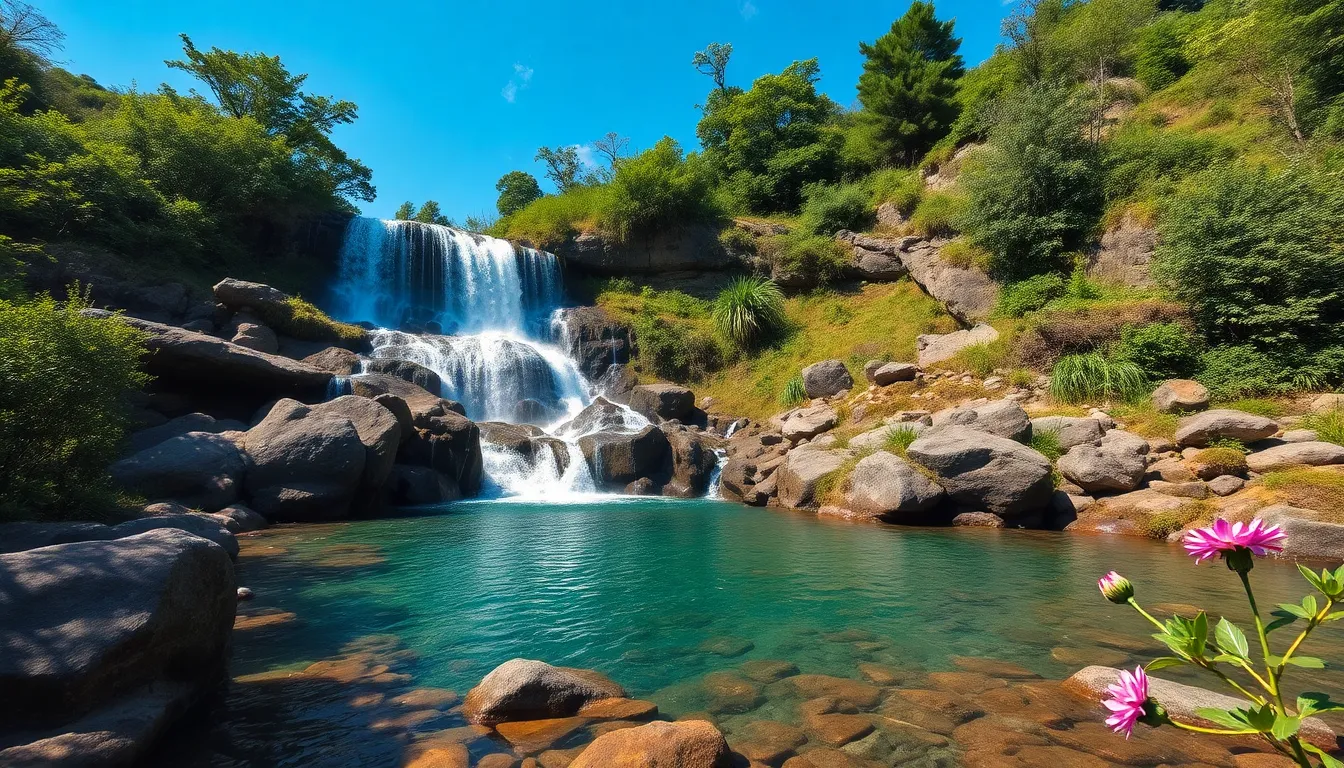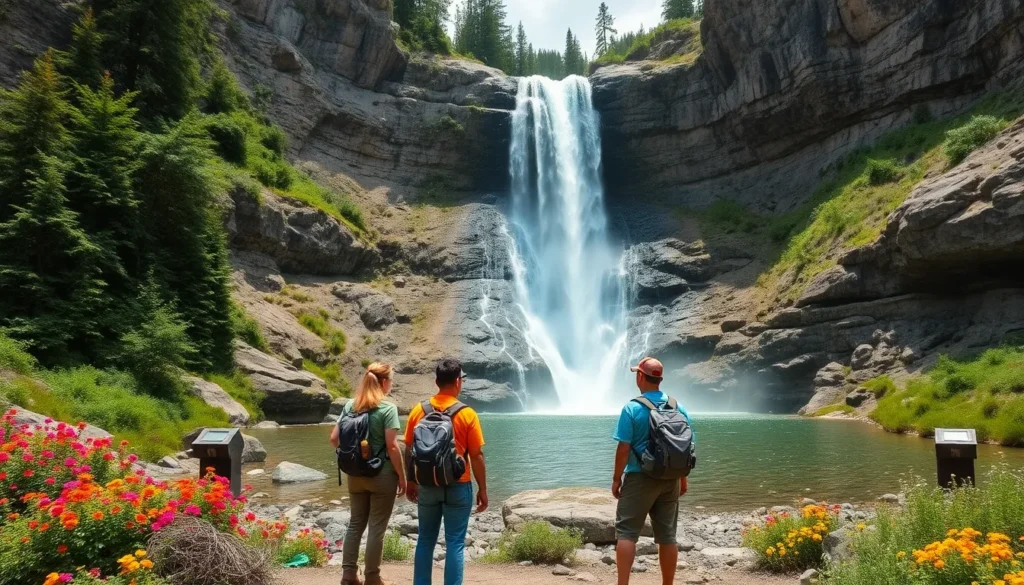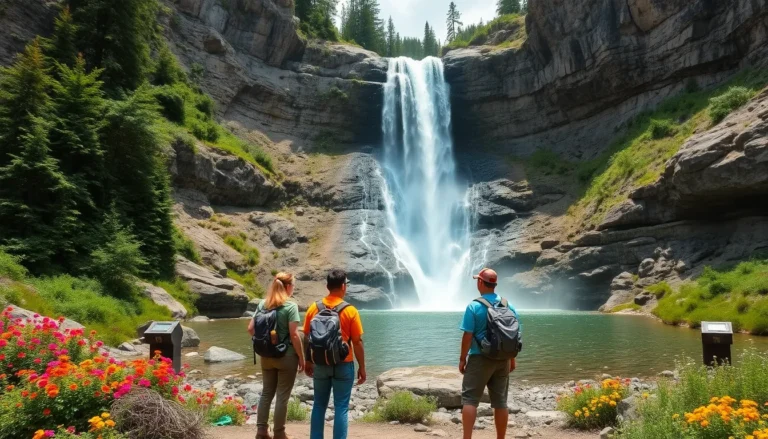Picture this: you’re hiking through the stunning landscapes of Follheur Waterfall, the sun’s shining, and the sound of rushing water fills the air. You spot that crystal-clear cascade and think, “Could I quench my thirst with that?” Before you dive in like a thirsty cartoon character, let’s explore whether sipping from this picturesque waterfall is a safe bet or a recipe for disaster.
Table of Contents
ToggleOverview of Follheur Waterfall
Follheur Waterfall captivates visitors with its striking beauty and serene environment. Located in a picturesque setting, it draws nature enthusiasts and adventure seekers alike. Visitors often feel tempted to drink the refreshing water flowing over the rocks.
Natural springs typically feed the waterfall, making the water appear pristine. Wildlife inhabits the surrounding area, adding to its charm. Animals like birds and insects thrive near the water source, which might affect water quality. Pollution from nearby trails or human activity could contaminate the water.
Users of the waterfall should evaluate the safety of drinking it directly. Waterborne pathogens and contaminants are potential risks in natural water sources. Individuals can minimize health risks by using water purification methods, such as boiling or filtration.
Testing water for contaminants like bacteria or heavy metals can provide peace of mind. Many parks and natural reserves offer nearby facilities for gathering clean water, often deemed safer. Checking for signs of pollution, like litter or discoloration, is also essential.
While Follheur Waterfall enchants visitors with its beauty, the decision to drink from it must consider safety. Evaluating the surrounding environment and sources of contamination provides vital information. Natural beauty should not overshadow the importance of health and safety in outdoor settings.
Water Safety Standards


Understanding water safety standards is crucial for determining the safety of drinking from Follheur Waterfall. Natural water sources offer unique challenges and benefits, particularly in terms of water quality.
Natural Water Sources
Natural water sources, like Follheur Waterfall, often have varying levels of purity. Springs, rivers, and waterfalls may contain beneficial minerals, but wildlife interaction can introduce pathogens. Different animals can contaminate water with fecal matter, which can carry harmful bacteria. Consistent monitoring is important to assess the purity of the water. In remote areas, the risk of contamination typically increases due to limited oversight. Sampling the water periodically helps ensure its safety for consumption.
Contaminants to Consider
Contaminants in natural water sources pose significant health risks. Bacteria like E. coli and Salmonella can lead to gastrointestinal illnesses. Heavy metals, such as lead and mercury, may also seep into the water from nearby geological formations or human activities. Local pollution from trails and nearby campsites increases the likelihood of these contaminants entering the water. Routine testing for pathogens and chemicals is vital for identifying potential hazards. Being aware of seasonal changes can reveal fluctuations in water quality linked to rainfall or wildlife activity.
Analysis of Follheur Waterfall Water
Evaluating the water quality of Follheur Waterfall involves assessing various factors that influence its safety for drinking. Understanding local water testing practices is crucial.
Local Water Quality Testing
Local authorities frequently conduct water quality tests to measure purity levels. Monitoring programs often focus on contaminants such as bacteria, heavy metals, and chemical pollutants. Regular testing helps ensure the water remains safe for recreational use. It’s essential to check local environmental agency reports and any advisories regarding recent test results. Visitors should look for signs indicating whether the water is suitable for drinking. Relying on these tests offers a better understanding of potential hazards in the area.
Potential Risks
Several risks accompany drinking water from Follheur Waterfall. Wildlife interactions can introduce pathogens like E. coli and Salmonella, posing health hazards. Nearby trails often contribute to contamination from human activity, leading to elevated bacteria levels. Seasonal factors also play a role, as heavy rains can wash pollutants into the water. Ultimately, the absence of thorough testing raises serious concerns about the water’s safety. Pathogens and contaminants can lead to illness, making caution imperative for anyone considering drinking from the waterfall.
Recommendations for Visitors
Visitors to Follheur Waterfall should prioritize their health and safety when considering drinking from its waters. Taking preventive measures ensures a safer experience while enjoying the scenic beauty.
Safe Drinking Practices
Prioritize boiling water to eliminate pathogens. Filtering can also reduce contaminants effectively. Test for pollutants using reliable testing kits before consumption. Look for clear signs of pollution such as debris or unusual colors. Observing local wildlife activity may provide insights into potential water quality issues. Choosing to avoid drinking during heavy rainfall periods can prevent exposure to washed pollutants. Engage with park officials for the latest information on water quality assessments.
Alternatives to Drinking Water
Camping nearby offers opportunities to bring sufficient bottled water. Locally sourced spring water, when available, serves as a safer alternative. Restaurants or visitor centers typically provide clean drinking water. Hydration packs may contain purified water for day hikes. Nearby establishments often offer facilities for refilling water bottles. Consider bringing a portable water filtration system for additional peace of mind. Drinking water from certified sources ensures a higher level of safety for visitors.





